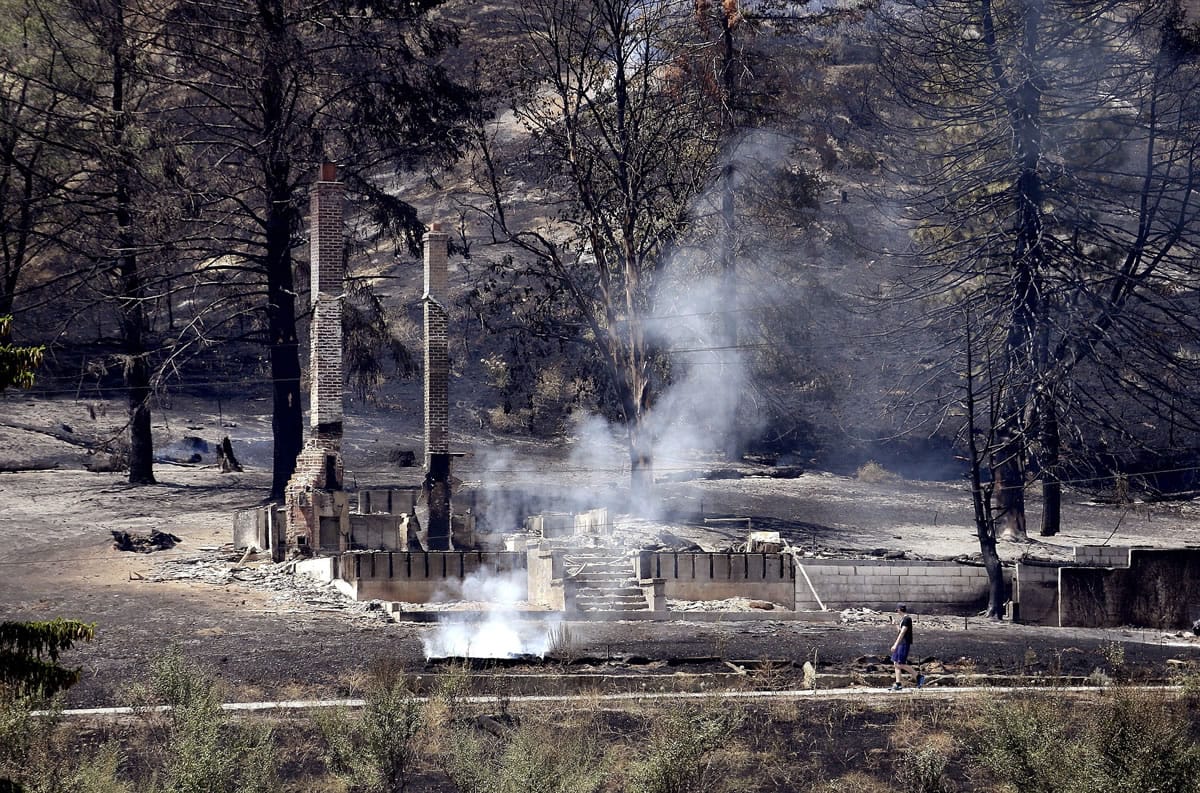Local Angle
In Clark County, fire agencies have been busy responding to a number of small grass and brush fires as a string of 90-degree-plus days continue. Farther east, two grass fires restricted traffic Thursday night along portions of Highway 97 near Maryhill and along Highway 14.
The fire danger is rated “High” in the Gifford Pinchot National Forest and Columbia River Gorge National Scenic Area, and campfire and other burning restrictions are in place in most wildland jurisdictions.
SEATTLE — Predictions of an early wildfire season have come true in the Northwest as low snowpack levels, record warm temperatures and very dry conditions have helped fuel blazes weeks earlier than usual.
Fires have destroyed more than two dozen homes and torched 30 square miles in Washington, as well as burned about 60 square miles in Oregon so far this year, according to the National Interagency Fire Center.
Local Angle
In Clark County, fire agencies have been busy responding to a number of small grass and brush fires as a string of 90-degree-plus days continue. Farther east, two grass fires restricted traffic Thursday night along portions of Highway 97 near Maryhill and along Highway 14.
The fire danger is rated "High" in the Gifford Pinchot National Forest and Columbia River Gorge National Scenic Area, and campfire and other burning restrictions are in place in most wildland jurisdictions.
“Although typical for later in the season, it’s really early to get these big fires,” said Coleen Haskell with the fire center’s predictive services in Boise, Idaho.
June brought searing temperatures to many parts of Washington and Oregon, drying out already parched grasses, shrubs, trees and other fuels and increasing their potential to ignite. Many areas in the region had their warmest June on record.
“It just makes the fuel that much hotter and takes less energy to start a fire,” said Colin Robertson, a fire behavior analyst for the Washington Department of Natural Resources
The earlier fires are extending the season by an extra three weeks to a month, Haskell said.
So far this year, there have been more than 300 small and large fires in Washington and Oregon. By June 22, there were 321 small and large fires in Washington, compared to 224 for the same period last year, according to Natural Resources.
The fire center’s July 1 forecast calls for above-normal wildfire danger in the Northwest for July through September. The forecast also says that large trees and logs are currently as dry as they would typically be in August.
In Washington state, lightning caused a fire in a remote rain forest of Olympic National Park. The fire area experienced its driest spring since 1895, and precipitation from January until June was less than 10 percent of normal, said Donna Nemeth, a spokeswoman for that fire response.
Some cities and counties have passed emergency fireworks bans, and state and city officials are pleading with the public to be extra cautious this summer.
Following a lack of snow and a dismal mountain snowpack in Washington and Oregon this winter, shrubs, grasses and trees are holding less moisture, drying out earlier and are thus much easier to ignite, fire experts say.
But the low snowpack is only one of the ingredients needed to create fire, said Dave Peterson, a research biologist with the U.S Forest Service’s Pacific Northwest Research Station. And the reduced snowpack isn’t the most important.
“You need to have fuels that are flammable. You need to have a period of warm dry weather, and you need to have an ignition.”
Peterson said he wouldn’t link these early-season fires, or any fire, to climate change. “However, we will almost certainly see more early fire, more late fire, and more area burned as the climate continues to warm,” he said.
“If this is going to be the new normal decades into the future as the climate warms, it will be more difficult to resist it. It probably makes more sense to adapt to it,” Peterson said.



